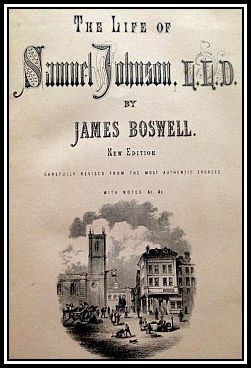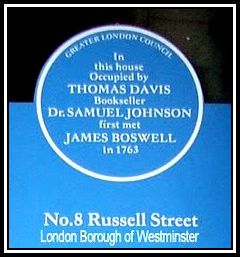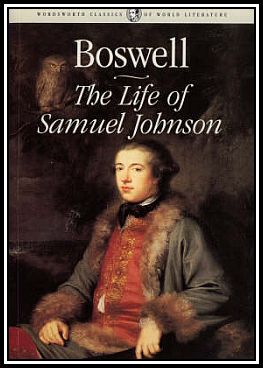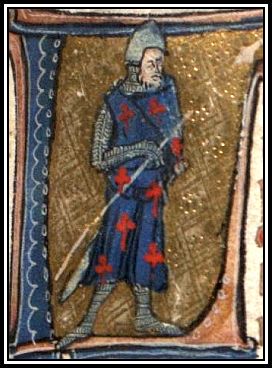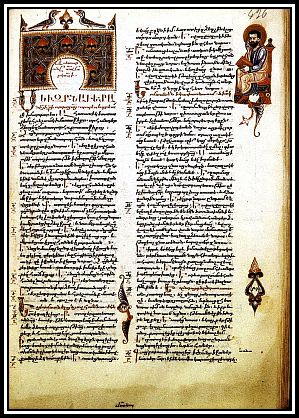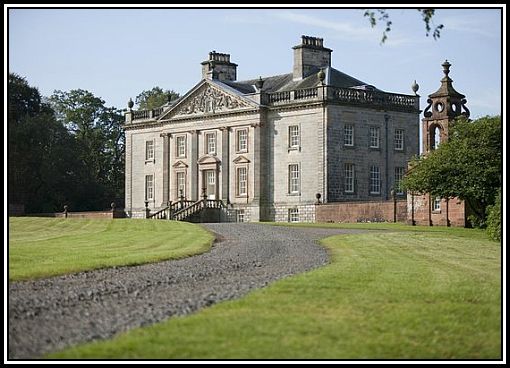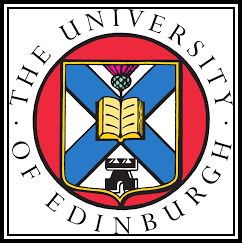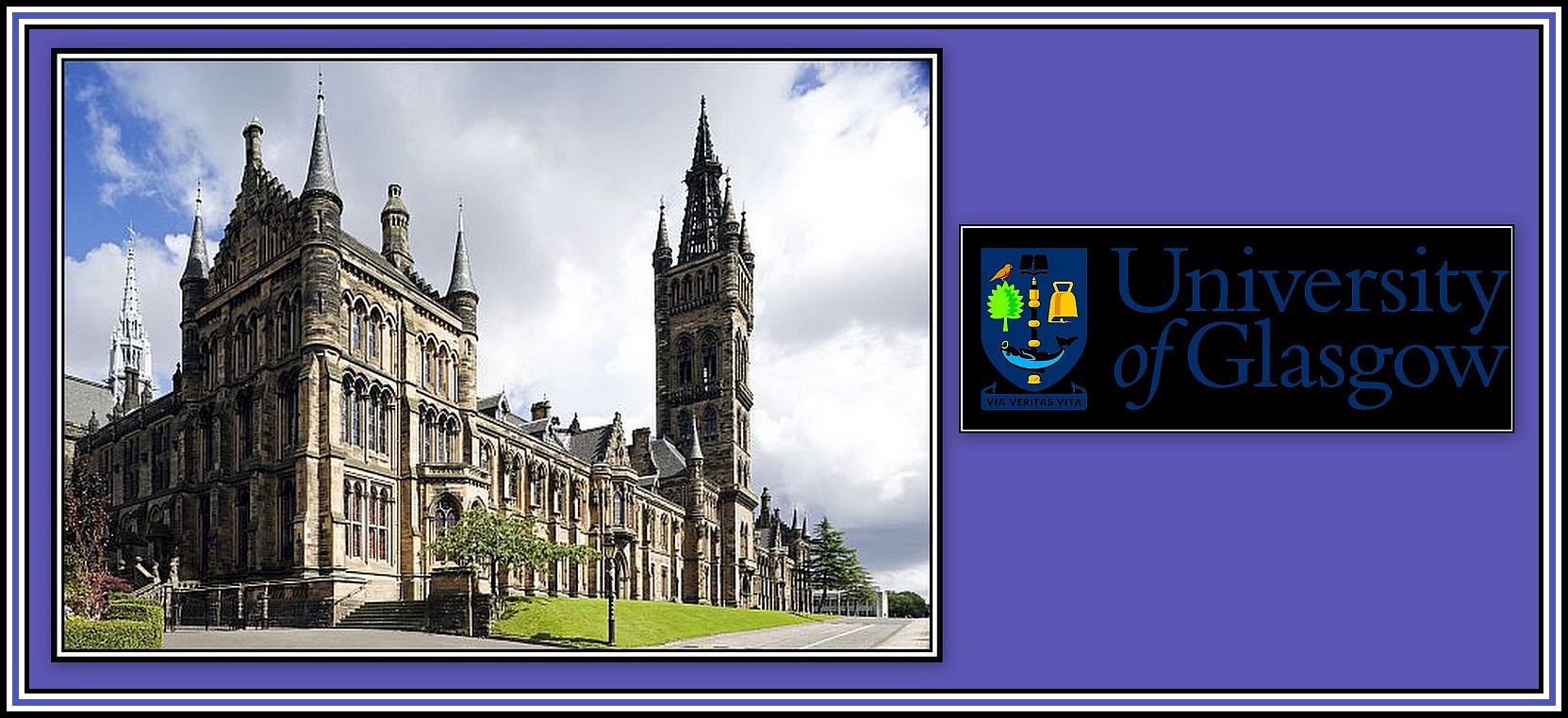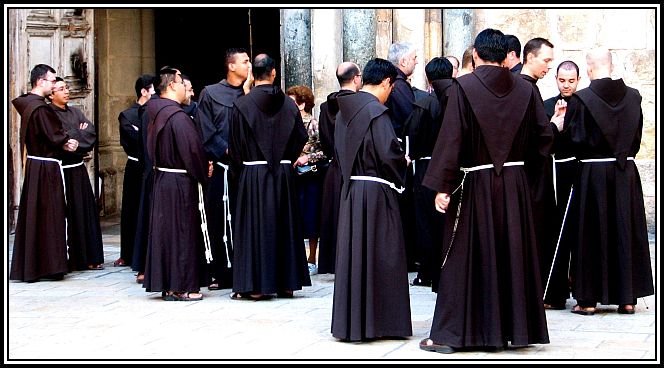THE LIFE & TIMES
OF
DOCTOR SAMUEL JOHNSON
 Dr. Samuel Johnson (1709-1784)
Dr. Samuel Johnson (1709-1784)
-oOo-
May I once again recommend that the reader listen to some music while reading about James Boswell.
The music is Handel’s Water Music: Hornpipe-Menuet-Rigaudon; performed by The English Bach Festival Orchestra and Directed by the Solo Violinist, Christopher Hirons.
-oOo-
JAMES BOSWELL
THE 9TH LAIRD OF AUCHINLECK
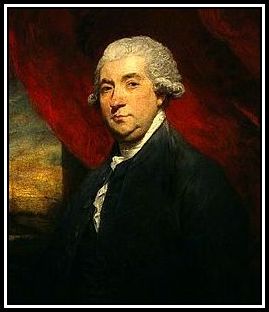 James Boswell in 1785; painted by Sir Joshua Reynolds
James Boswell in 1785; painted by Sir Joshua Reynolds
-oOo-
James Boswell (1740-1795) is best remembered for writing what is considered to be the most important biography written in English, The Life of Samuel Johnson LL.D.
Doctor Johnson was 54 years old, and already a renown figure in the literary world, when on the 16th May, 1763, he went to visit his friend, Tom Davies (1713-1785), at his bookshop in Covent Garden.
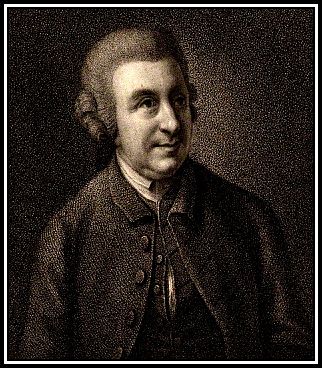 An Engraving of Tom Davies (1794) by Luigi Schiavonetti (1765-1810)
An Engraving of Tom Davies (1794) by Luigi Schiavonetti (1765-1810)
While here, James Boswell, who was only 22-years old at the time, was introduced to Doctor Johnson. This proved, eventually, to be a memorable meeting for each and for us and for all future generations.
Although Boswell did not meet Doctor Johnson until 1763, his biography covered his entire life. In order to learn of his subject’s earlier years, he undertook extensive research, but did take a certain poetic license in his writing and made some changes to Doctor Johnson’s life as well, as to some of his quotations, and also censored a number of his comments.
The Life of Samuel Johnson LL.D. proved to be a critical and popular success when it appeared in 1791. However, a number of modern critics feel that it is not a true biography. Some consider it as being nothing more than a collection of diary entries made by Mr. Boswell reflecting their interactions during the last twenty-two years of Doctor Johnson’s life and shows no real effort to complete his life story.
Regardless of what certain modern critics may say, Mr. Boswell wrote an interesting and informative account of the life and times of the most distinguished man of letters in English History until now. We are indebted to Mr. Boswell for making Doctor Johnson available to us today and for providing a window into life during the 18th Century.
-oOo-
JAMES BOSWELL
LIFE BEFORE DOCTOR JOHNSON
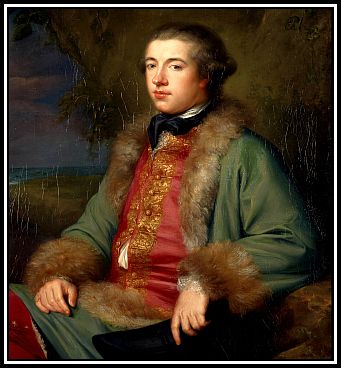 James Boswell at 25 years of age (1765); painted by George Willson ((1741–1797)
James Boswell at 25 years of age (1765); painted by George Willson ((1741–1797)
-oOo-
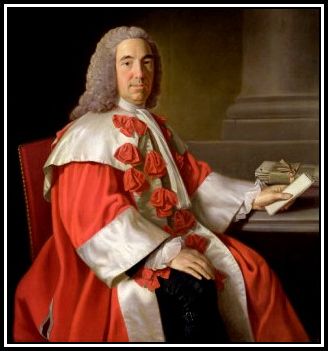 Alexander Boswell, 1754, 8th Laid of Auchinleck (1706-1782), painted by Allan Ramsay (1713-1784)
Alexander Boswell, 1754, 8th Laid of Auchinleck (1706-1782), painted by Allan Ramsay (1713-1784)
James Boswell was the eldest son of Alexander Boswell, Lord Auchinleck, a judge of the Supreme Courts of Scotland. In 1740, Lord Auchinleck rescued the Auchinleck Manuscript from a Professor of the University of Aberdeen who was about to destroy it. He later donated the Manuscript to the Advocates’ Library in Edinburgh.
-oOo-
The Auchinleck Manuscript is an illuminated manuscript copied onto parchment by professional Scribes who were Laymen and not Monks, which was the case for religious manuscripts. It was produced during the 14th Century and illustrates a time of political tension and social change in England when the English was continuing to reclaim their language and national identity and distancing themselves from The Normans.
Although the Manuscript was illuminated, it is not as ornate as religious books of the time (e.g. The Books of Hours). The text of illuminated manuscripts were decorated with initials, borders or marginalia and miniature illustrations (i.e. a picture).
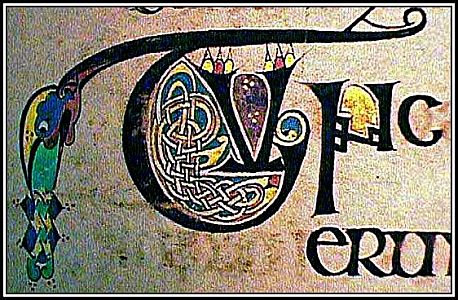 An Initial or Dropcap is a letter at the beginning of a word, a Chapter, or a Paragraph that is larger than the rest of the text; this is an example of an Initial from The Book of Kells.
An Initial or Dropcap is a letter at the beginning of a word, a Chapter, or a Paragraph that is larger than the rest of the text; this is an example of an Initial from The Book of Kells.
 A Miniature is a small picture in the text of the Manuscript; here a capital S containing a Miniature of Moses being found by Pharaoh‘s daughter; from the Breviary of Chertsey Abbey (14th Century); a Breviary is a book containing the service for each day, to be recited by those who have taken Orders in the Roman Catholic Church.
A Miniature is a small picture in the text of the Manuscript; here a capital S containing a Miniature of Moses being found by Pharaoh‘s daughter; from the Breviary of Chertsey Abbey (14th Century); a Breviary is a book containing the service for each day, to be recited by those who have taken Orders in the Roman Catholic Church.
Unfortunately, only four Miniatures remain associated with the Auchinleck Manuscript. These together with the letters, demonstrate that the Manuscript must have been beautifully, if modestly, decorated at one time.
Although the Auchinleck Manuscript may not be well known outside Academia, it is one of the most important English documents surviving from the Middle Ages. The Manuscript not only tracks the literature of the period, thereby reflecting the tastes of readers and how the interests were increasingly diverging from religious topics, but also the development of a language as part of a national self-image.
Without doubt, much is owed to The 8th Laird of Auchinleck for saving the Manuscript from destruction ……. and, in addition, as the reader will learn, for saving his elder son from leading the life of a Libertine!
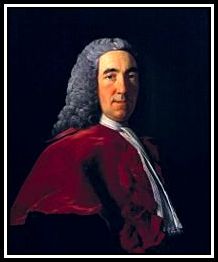 Alexander Boswell, 1753, painted by Allan Ramsay (1713-1784)
Alexander Boswell, 1753, painted by Allan Ramsay (1713-1784)
-oOo-
Judge Boswell and his elder son, James, argued over a number of matters including his career choice, publishing methods, routes of travel, his friends and even his choice of wife. This is indeed quite a list when you consider it.
James was heir to his family’s estate of Auchinleck in Ayrshire and one can but assume that his father had certain plans for him. As a child, he was delicate and suffered from a nervous disorder, which afflicted him periodically throughout his life. Apparently his father and mother, who was a Calvinist, were not exactly warm to him and sent him away to school at the age of five, where he studied English, Latin, writing and arithmetic. He evidently did not enjoy his experience and suffered nightmares and suffered extreme shyness. Eventually he was brought home and then educated by a number of private tutors.
In 1753, at the age of thirteen, he was sent to the University of Edinburgh where he remained until 1758. During his studies, he became severely depressed and left the University for a while. When he returned, he was apparently in good health and showed no signs of his previous delicacy and grew to be a robust fellow with a good sense of humour.
When he was nineteen years old, James Boswell went to continued his studies at the University of Glasgow, however while there, he converted to Catholicism with an aim of becoming a Monk. His father was not exactly pleased when he received the news and demanded that his son return home tout de suite.
Without wishing to sound cynical, it would appear that James’ new found devoutness was somewhat short-lived since his response to his father’s demand was not to obey, but to travel to London where he took up life as a Libertine for a while.
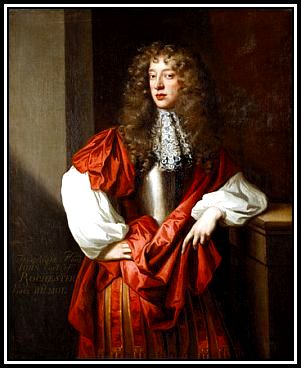 John Wilmot, 2nd Earl of Rochester (1647-1680) – Poet & Rake – Devotee of The Libertine Lifestyle
John Wilmot, 2nd Earl of Rochester (1647-1680) – Poet & Rake – Devotee of The Libertine Lifestyle
-oOo-
In 1760, while in London, Boswell was introduced to the elegance, the refinement and the liberality of London Society. He was taken to Newmarket and introduced into the Society of the great, the gay and the ingenious. The trip inspired him to write the poem, The Cub at Newmarket, which he paid to have published in 1762.
Knowledge of his son’s new lifestyle sat even less well with The Judge who set off for London with the express purpose of accompanying his son back home.
Upon his return to Scotland, James was allowed to continue his studies, but at the University of Edinburgh, where I am sure his father could keep an eye on him. In addition, his father required him to sign away most of inheritance in return for an allowance of £100 a year.
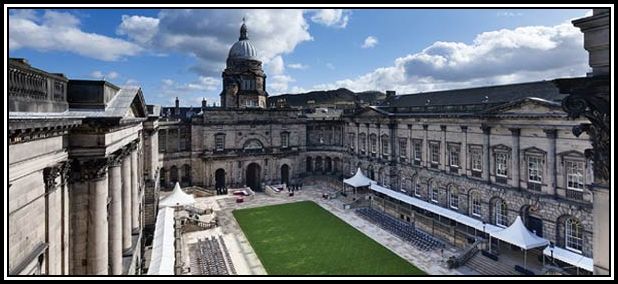 University of Edinburgh Law School
University of Edinburgh Law School
In 1762, following his successful showing in his oral Law Examination, his father raised his allowance to £200 a year.
James had now developed the notion of joining The Guards. However, he agreed to give up his military aspirations if his father allowed him to continue his Law Studies in Utrecht. His father agreed and he set off for London in April 1763.
While in London, James maintained a Journal. This Journal was lost, but was discovered in the 1920s along with other private papers and was published in 1950, as The London Journal. Included in The Journal are The Louisa Episodes, which describe Boswell’s encounters with a young lady of Covent Garden from whom he apparently contracted Gonerrhea.
It was during this visit to London that on the 16th May, 1763, Boswell first came into contact with Doctor Johnson, a notoriously unfriendly man, that he had long admired and now tried hard to impress him.
According to what is recorded in The Life of Samuel Johnson, LL.D. by James Boswell, the first words that passed between them were related to Boswell being Scots. Seemingly this displeased Doctor Johnson. When Boswell admitted to coming from Scotland, he added that he could not help it. Following his explanation, the good Doctor commented ……..
That, Sir, I find, is what a very great many of your countrymen cannot help.
-oOo-
CLICK HERE
To Read About
JAMES BOSWELL: LIFE WITH DOCTOR JOHNSON
OR
CLICK HERE
to RETURN to the series HOME PAGE
——oooOOOooo——
ACKNOWLEDGEMENTS
I would like to thank Mr. Paul Bland for his help.
——oooOOOooo——
Click here to GO to JAMES BOSWELL: LIFE WITH DOCTOR JOHNSON
——oooOOOooo——
Click here to RETURN to LIFE AFTER THE DICTIONARY
——oooOOOooo——
Click here to RETURN to DOCTOR JOHNSON IN LONDON
——oooOOOooo——
Click here to RETURN to DOCTOR JOHNSON’S SORTIE INTO LOVE AND MARRIAGE
——oooOOOooo——
Click here to RETURN to THE EARLY LIFE & OF DR. SAMUEL JOHNSON
——oooOOOooo——
Click here to RETURN to DR. SAMUEL JOHNSON – CONFESSION
——oooOOOooo——
Click here to GO to the TABLE OF CONTENTS
——oooOOOooo——

